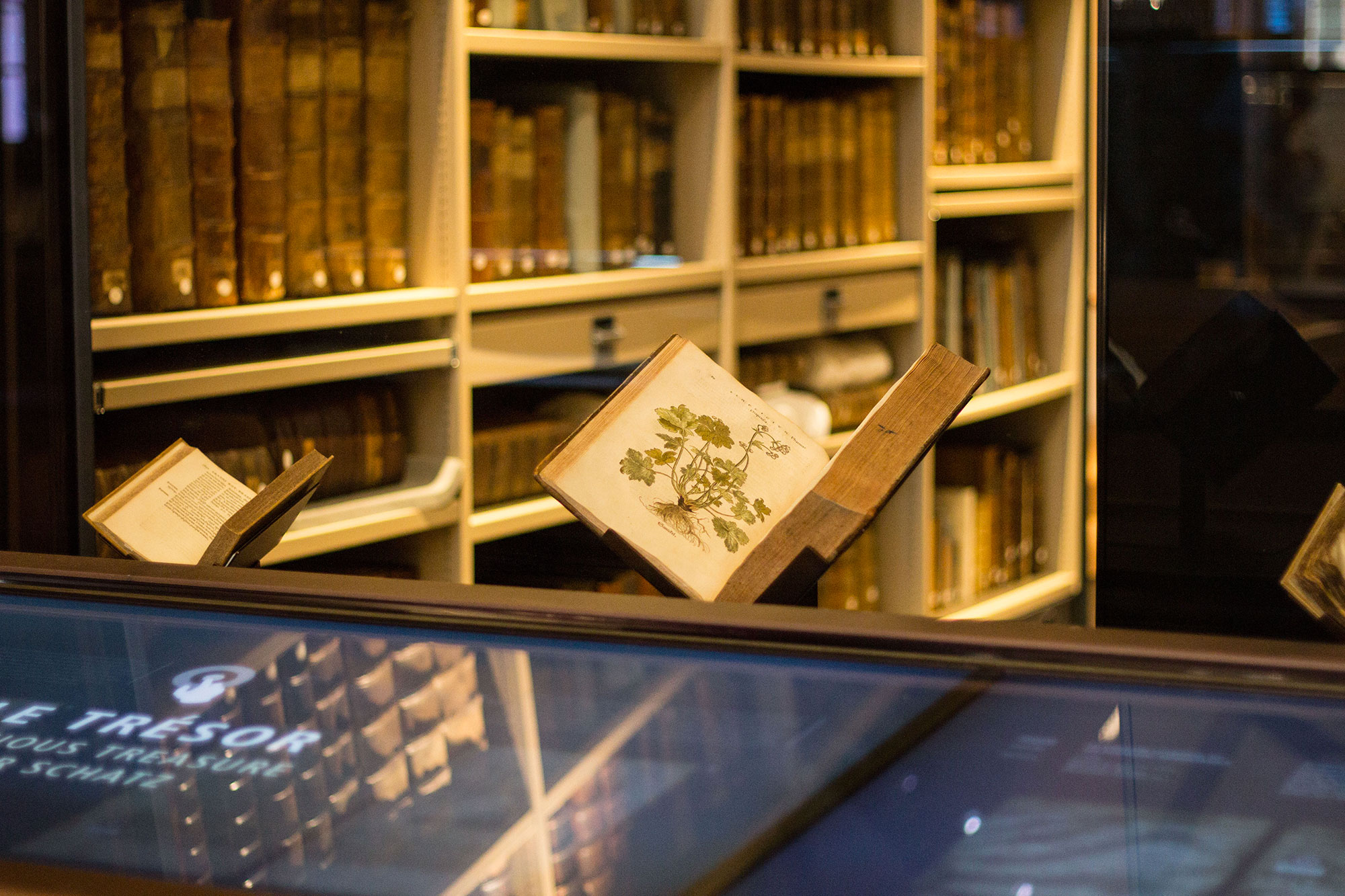
Digital scenography of the Humanist Library
Sélestat France
june 2018


The new Humanist Library is a museum that positions itself as a place for the transmission of knowledge centred on humanism and books. The course is structured around a series of digital mediation devices designed by Mosquito agency, whose particularity is to promote learning through play and manipulation.
The museography presents a tour accessible to a wide audience, this tour, the main axis of which is embodied by Beathus Rhenanus, offers visitors the opportunity to discover a wide selection of digital books and facsimiles retracing the journey and thought of the Selestadian humanist in the 15th century.

Discover the treasure

In a large touch table, the visitor will discover a selection of the main pieces of the treasure. By default, the works presented in the display case are also presented on the surface of the table, the open double page is identical to the one presented in the display case.
When a book in the window is being viewed on the table, a projector illuminates the book while a "personal consultation space" is displayed on the digital screen. When the system is put into standby mode, the books presented in the display case are displayed again on the table, open on the same double page.
The copyist’s workshop

The device makes it possible to carry out an experiment : writing as in the Middle Ages. Thanks to two touch screens, visitors can reproduce gestures similar to those of the medieval copyist. Then, the words are compiled in a digital book to form a work created by all visitors : a new copy of a masterpiece from the "Livre des miracles de Sainte Foy" collection. The result of this workshop is presented in the hall screen. It is a generative animation in the form of a white paper whose pages are filled in as visitors go along. Thus the device has a short-term objective : to carry out a "manipulation" in the copyist’s studio and a long-term objective to copy one of the masterpieces from the collection by calling on the "community" of visitors to the museum.
The printer’s workshop

On a touch screen, the visitor experiences the gestures of the printer typographer. He composes a word by manipulating moving characters in a "case", then operates a 3D facsimile of the Gutenberg press to ultimately discover its composition. Will it be readable ? The final step is for the visitor to print his word on a ticket and thus keep a personalized souvenir of his visit.
The engravings of the Münster

![L'image montre un objet en bois, probablement un dispositif interactif ou un meuble design. La surface supérieure présente une gravure d'un animal, peut-être un tigre, entourée d'un cadre en bois. Sur le côté, il y a plusieurs boutons étiquetés "[Fr]", "[En]", et "[De]", suggérant que cet objet pourrait avoir une fonction liée aux langues. En dessous de la surface gravée, des planches en bois sont visibles, indiquant qu'il pourrait s'agir d'un système de rangement ou de présentation. Le sol en bois et l'environnement suggèrent un intérieur moderne et élégant.](IMG/jpg/munster.jpg)
Ranked in 2 boxes in the centre of a seat, forty wooden plates show a selection of some of the engravings from the Münster, a kind of 15th century encyclopedia. The visitor picks up an engraving and slides it into the nearby housing. The plate is equipped with an RFID antenna, which when it comes into contact with the reader triggers the voice-over reading of the definition extracted from the book. The device plays on the effect of surprise, and the amusement of some crazy descriptions.
THANK’S TO
Emmanuel Rouillier, Mosquito : interactive design, UI and UX Design
Gilles Vignier, workshop àKiko : scenography design
Muriel Meyer Chemenska, Métapraxis : Museography
Arnaud Waels, Devocité : production, development
Colin Bouvry : development
Mathieu Virbel : development
Cyrille Carillon, Sound Agency : voiceover
Sergio Menegassi : Motion design
Laurent Segelle, ETC : Installation
And the entire team at the Humanist Library














